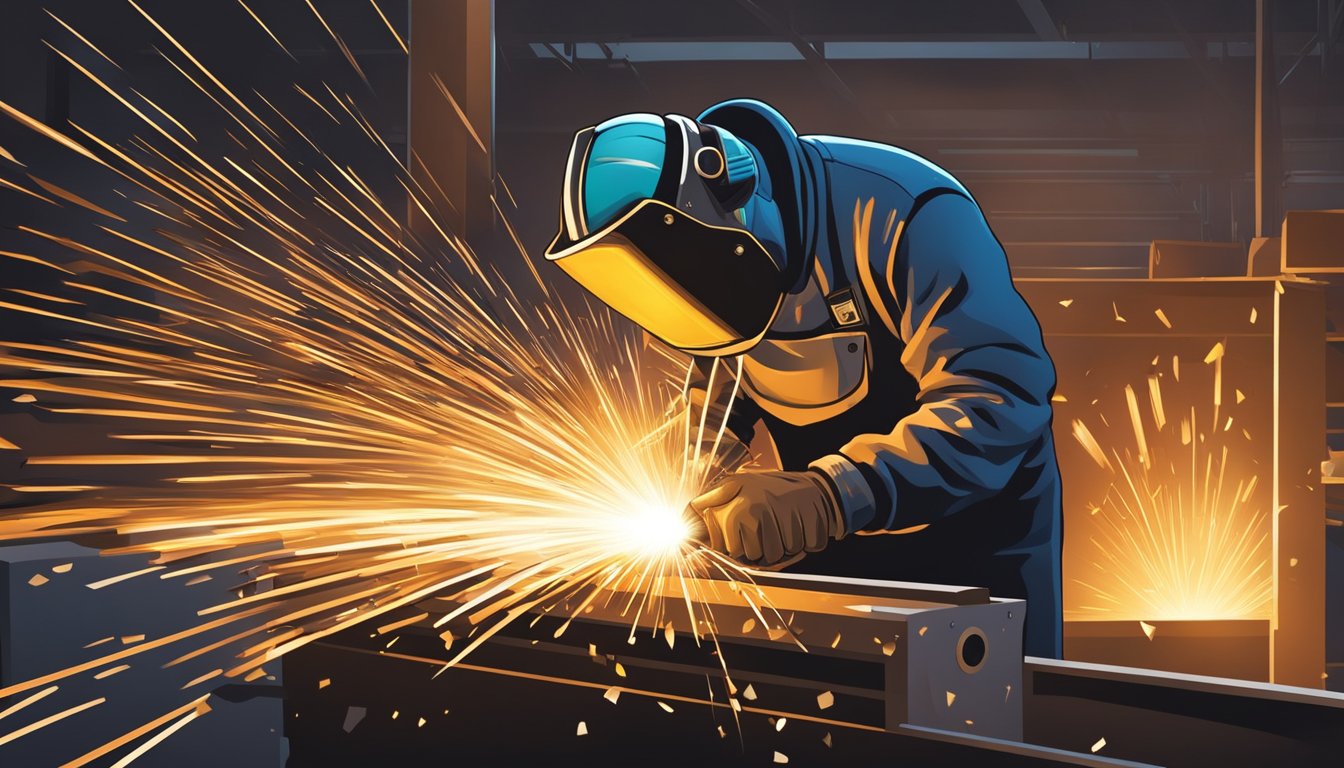The Ultimate Overview to Welding WPS Procedures: A Thorough Overview for Welders
In the complex world of welding, Welding Treatment Requirements (WPS) serve as the backbone of ensuring quality, consistency, and security in welding operations (welding WPS). As we dive right into the various parts of a WPS and check out the details of credentials and certification, we will certainly reveal the vital role these procedures play in the realm of welding.
Significance of WPS Procedures
Comprehending the significance of Welding Treatment Specifications (WPS) treatments is vital for guaranteeing the high quality and honesty of bonded frameworks. WPS procedures serve as a roadmap for welders, outlining the essential steps, criteria, and products called for to attain a sound weld. By sticking to WPS guidelines, welders can guarantee uniformity in their job, bring about structurally audio and trustworthy welds.
One of the primary reasons why WPS treatments are necessary is their duty in keeping weld quality and honesty. Following the defined welding parameters and methods laid out in the WPS helps protect against issues such as porosity, breaking, or insufficient blend, which can jeopardize the strength and longevity of the weld. Furthermore, WPS treatments are essential for making certain compliance with market requirements and codes. By complying with well-known WPS standards, welders can show that their job fulfills the necessary requirements for safety and high quality, providing assurance to clients, assessors, and regulatory bodies. Fundamentally, the significance of WPS treatments can not be overemphasized, as they are essential to accomplishing consistent, top quality welds that satisfy industry requirements and requirements.

Components of a WPS
A Welding Treatment Requirements (WPS) normally comprises crucial components that detail the specific demands for performing a weld, making sure consistency and top quality in the welding process. The vital elements of a WPS consist of essential variables such as base metals, filler metals, preheat and interpass temperature levels, welding procedures, shielding gases, welding positions, and post-weld warm treatment requirements.
Base metals refer to the materials being joined, while filler steels are made use of to fill the gap in between the base metals during welding. The welding procedure details the particular strategy to be utilized, whether it's gas metal arc welding (GMAW), secured metal arc welding (SMAW), or one more technique. Welding placements define the positionings in which welding can be carried out.

Credentials and Certification
Having developed the important elements of a Welding Procedure Specification (WPS), the focus currently shifts in the direction of the vital facets of certification and certification in welding methods.

Accreditation, on the various other hand, is the formal acknowledgment of a welder's credentials by a pertinent accreditation body or company. Welding certifications are typically based on the particular welding procedures, materials, and positions a welder is qualified to collaborate with. Holding a valid welding qualification demonstrates that a welder website link fulfills market requirements and is skilled to carry out welding jobs to the called for specs.
Developing a WPS
To establish a Welding Treatment Specification (WPS) that meets market requirements, careful factor to consider of welding procedures, materials, and operational criteria is essential. The very first step in developing a WPS is to determine the welding procedure to be made use of, such as gas metal arc welding (GMAW) or secured metal arc welding (SMAW)

Executing and Monitoring WPS
Upon finalizing the extensive Welding Procedure Spec (WPS) that thoroughly details welding processes, products, operational specifications, and quality control actions, the focus shifts to successfully implementing and keeping track of the established procedures. Execution entails ensuring that all welders associated with the project are acquainted with the WPS and follow it thoroughly throughout the welding procedure. This calls for supplying ample training and guidance to assure adherence to the specified treatments. Keeping an eye on the WPS involves continual oversight to validate that welding activities align with the documented specs. Evaluations, testing, and top quality control steps are essential components of the surveillance process to recognize any type of variances or problems without delay. Regular audits and evaluations of the welding treatments aid in keeping uniformity and quality throughout the task. Effective execution and tracking of the WPS are vital for guaranteeing the honesty, strength, and security of the welded joints, eventually adding to the general success of the welding job.
Final Thought
In final thought, understanding and complying with Welding Treatment Specifications (WPS) is important for welders to ensure high quality, consistency, and security Recommended Site in their work. By understanding the parts of a WPS, getting proper certifications and certifications, developing comprehensive treatments, and applying and monitoring them properly, welders can enhance their skills and effectiveness in welding techniques. Abiding by WPS treatments is necessary for creating high-quality welds and conference sector standards.
In the complex world of welding, Welding Procedure Specifications (WPS) offer as the backbone of guaranteeing top quality, uniformity, and security in welding operations. The welding procedure outlines the particular method to be used, whether it's gas steel arc welding (GMAW), shielded metal arc welding (SMAW), or one more method.To create a Welding Treatment Spec (WPS) that satisfies market criteria, mindful factor to consider of welding processes, materials, and functional criteria is necessary. The first action in producing a WPS is to determine the welding procedure to be used, such as gas metal arc welding (GMAW) or shielded metal arc welding (SMAW)Upon wrapping up the comprehensive Welding Procedure Spec (WPS) that meticulously details welding processes, products, functional criteria, and quality assurance actions, the emphasis shifts to properly implementing and keeping an eye on the well-known treatments.
Comments on “Welding WPS Explained: Key Components and Advantages for Your Welding Procedures”